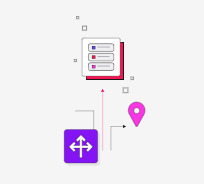#*ngifs
Text



The Drew Barrymore Show
994 notes
·
View notes
Text










@pscentral event 18: adaptations
SILVER SCREEN to KINGDOM HEARTS WORLDS
#kingdom hearts#khedit#khgraphics#khsource#nyctoheart#singinprincess#userhannah#underbetelgeuse#tusercat#userxoames#userpanda#userdean#usercas#dailygaming#gamingedit#gamingnetwork#angelblr#tagged:kingdomhearts#filmedit#ngifs
1K notes
·
View notes
Text







SHOWNU / RUNWAY DEBUT
— CONCEPT KOREA @ NYFW (240213)
638 notes
·
View notes
Text
For a solid week I have either been furiously writing code for a stupid work project, or turning off my brain and playing Terraria. Besides eat, sleep and run two brief errands I've done nothing else. I am incapable of conversation anymore, I only know ngIf, use pickaxe, and die.
22 notes
·
View notes
Text
Angular Interview Questions and Answers: Part 11
This is the 11th part of the Angular Interview Questions and Answers Series. In this part we will discuss the answers of the following Angular Questions:
Q122. What are Directives in Angular? When to use directive?
Q123. What are the different types of directives in Angular?
Q124. What is the use of the *ngFor directive? What is the difference between the *ngFor vs. ngForOf directive in Angular?
Q125. What is the index property in *ngFor directive? What is the use of index property in *ngFor directive?
Q126. What is the purpose of *ngFor trackBy in Angular?
Q127. What is the use of the *ngIf directive in Angular?
Q128. What is the difference between the *ngIfElse vs. *ngIf directive in SQL?
Q129. How can you use both *ngFor and *ngIf directives together on the same element?
Q130. What is the difference between the *ngIf directive vs. hidden property in Angular?
Q131. What is the use of the *ngSwitch directive?
Q132. What is the difference between the *ngStyle vs. *ngClass directive in Angular?
Q133. What is the use of ng-template in Angular?
Q134. What is the use of the ngModel directive in Angular? What is the "banana-in-a-box" syntax in Angular?
Q135. What is the difference between the (ngModel) vs [ngModel] vs [(ngModel)] directive in Angular?
Please visit the following link for the Answers of the above Angular Interview Questions:
#angularpart11#angularinterviewquestions#mostfrequentlyaskedangularquestions#angularfresherinterviewquestions#angularexperiencedinterviewquestions#commonangularinterviewquestions#angularinterview2023#techpointfundamentals#techpointfunda#techpoint#techpointblog
2 notes
·
View notes
Text
Kreskówka akrylowe kolczyki piękna dziewczyna

In Love With These Adorable Acrylic Earrings! Get Yours Now → https://kawaiibuy.co/0qyc1 😍💖 Don't Miss Out! #KawaiiFashion #CutieAccessories \nGif:
❤10% OFF Coupon: kawaii10off
📦Free worldwide shipping📦
#pastel#kawaii aesthetic#scorpio#egl#sanriocore#girlblogging#2000s aesthetic#2000s style#kirby#kawaiiaesthetic#kidcore#decora fashion#kawaiiness#cute shop
0 notes
Text
Visual Studio Code and Angular 17: Upgrading your site to @Control-Flow
In Angular 17 we get control-flow. In this article I’ll show you how and why to upgrade your code base, and how easy it is in Visual Studio Code.
What it is?
In essence, it makes your IF ELSE and FOR easier to ready and simple to action.
@if (isAdmin) {
<button>Grant Access to Thingy</button>
}
You can see how this code is easier to read than:
<button *ngIf="isAdmin">Grant Access to…

View On WordPress
0 notes
Text
What is the Angular Developer Salary for Freshers ?

Introduction :
An Angular developer is a professional focused on using the Angular framework to build sophisticated web applications. They are well-versed in languages like HTML, CSS, and TypeScript, utilizing these to create dynamic and responsive single-page applications (SPAs).
Content :
Angular developers organize their code using components, modules, and services, ensuring a structured and scalable application architecture. They harness Angular’s powerful features, such as data binding, to synchronize the user interface with underlying application data seamlessly. Collaboration with backend developers is a common practice, as Angular developers integrate the frontend with server-side functionalities, allowing for robust end-to-end application development. These professionals also emphasize testing, employing various strategies to validate and optimize the performance and reliability of their applications. In essence, an Angular developer is a key player in crafting modern web experiences, leveraging the capabilities of the Angular framework to deliver feature-rich and visually appealing applications.
Angular is a widely-used open-source web application framework, primarily maintained by Google and a collaborative community of developers. Developed in TypeScript, Angular empowers developers to construct dynamic single-page web applications (SPAs) featuring sophisticated user interfaces. The framework is equipped with several key features and concepts integral to Angular development.
Components: Angular applications are constructed through components, fundamental building blocks that encapsulate specific functionalities. Each component possesses its own HTML template, CSS styles, and TypeScript code, facilitating a modular and organized development approach.
Modules: Applications in Angular are organized into modules, acting as containers for related components, directives, pipes, and services. Modules facilitate a structured application architecture, aiding in the management of dependencies and overall project organization.
Templates: Angular employs HTML templates to define the user interface of a component. These templates support data binding, enabling the synchronization of data between the component and the view, enhancing the dynamic nature of the application.
Data Binding: Angular facilitates two-way data binding, enabling automatic updates between the application state and the user interface. This streamlines the development process, ensuring consistency between the application’s visual representation and its underlying data.
Dependency Injection: Angular incorporates a built-in dependency injection system, simplifying the management and sharing of instances of services, components, and other objects throughout the application. This promotes modularity and reusability in code.
Directives: Directives serve as markers on DOM elements, instructing Angular to perform specific actions on those elements or their children. Angular offers built-in directives like ngIf, ngFor, and ngSwitch, and developers can create custom directives to tailor functionality.
Services: Angular utilizes services to encapsulate business logic, data manipulation, and shared functionalities. These services, acting as singleton objects, can be injected into components and other services, fostering a modular and maintainable codebase.
Routing: Angular provides a robust routing system for managing navigation within a single-page application. Developers can define routes and associate them with components, allowing for the creation of distinct navigation paths and views.
HTTP Client: Angular includes an HTTP client module to facilitate making HTTP requests and handling responses. This module is crucial for communicating with backend servers, enabling data retrieval and submission.
Testing: Angular boasts a comprehensive testing framework supporting unit testing, integration testing, and end-to-end testing. This robust testing environment ensures the reliability and maintainability of Angular applications.
Angular streamlines the development of dynamic and responsive web applications by offering a comprehensive framework with well-defined conventions and tools. Its versatility makes it particularly well-suited for building large-scale applications with intricate requirements.
Roles & Responsibilities :
Angular developers are essential for crafting modern web applications. Their role includes understanding project requirements, designing and implementing application architecture, and developing user interfaces with Angular best practices. They create reusable components, handle routing, and integrate with back-end services. Testing, version control, and performance optimization are crucial aspects, along with collaboration with back-end developers and UX/UI designers. Continuous learning is emphasized to stay updated with Angular’s latest developments. In summary, Angular developers contribute to building responsive, scalable, and user-friendly web applications through their expertise in Angular and front-end development.
Angular is a popular front-end framework for building web applications. Angular developers play a crucial role in the development of web applications, and their responsibilities typically include.
Understanding Requirements:
Angular developers initiate the development process by engaging with various stakeholders, including project managers, designers, and back-end developers. Through active collaboration, they gain a comprehensive understanding of the project’s objectives, functional requirements, and constraints. This initial step is crucial for aligning development efforts with the overall goals of the project.
Application Architecture:
Designing the application’s architecture involves making informed decisions about its overall structure. Angular developers select appropriate architectural patterns and implement them to create a foundation that is not only scalable but also maintains a high level of organization. This includes defining the relationships and interactions between different components and modules within the application.
Angular Development:
Angular developers leverage the framework’s best practices to create visually appealing and interactive user interfaces. They write clean, modular, and maintainable code, adhering to Angular conventions. This step ensures that the codebase is structured in a way that is easy to understand, update, and extend. Responsive design principles are applied to guarantee optimal performance across various devices and screen sizes.
Component Development:
The creation of reusable and modular components is a fundamental aspect of Angular development. Developers implement data binding techniques to establish effective communication between different parts of the application. They skillfully manage the state and lifecycle of components, promoting code reusability and maintainability.
Routing and Navigation:
Angular applications often consist of multiple views and pages. Angular developers implement robust routing and navigation features, allowing users to navigate seamlessly between different sections of the application. This includes managing transitions between views and enforcing security measures through route guards to control access.
HTTP Services:
Integrating with back-end services is a critical aspect of dynamic web applications. Angular developers utilize Angular’s HTTP services to facilitate communication between the front-end and back-end systems. This involves handling asynchronous operations efficiently and managing API calls to ensure accurate data exchange.
Form Handling:
Angular developers are responsible for implementing and validating forms within the application. They utilize Angular’s form-handling mechanisms to create user-friendly interfaces for data input. Ensuring proper data binding between forms and components, developers validate user inputs and provide feedback for a seamless user experience.
Testing:
Quality assurance is paramount in Angular development. Developers write comprehensive unit tests for components, services, and modules to verify that each part of the application functions as intended. Actively participating in code reviews enables them to catch potential issues early, ensuring a high level of code quality throughout the development process.
Version Control:
Collaboration is streamlined through the use of version control systems, with Git being a popular choice. Angular developers employ branching strategies and pull requests to manage code changes collaboratively. This ensures a systematic approach to versioning, code integration, and collaborative development.
Performance Optimization:
Identifying and addressing performance bottlenecks is a continuous process for Angular developers. They analyze and optimize rendering processes, minimize HTTP requests, and implement best practices to enhance overall application performance. This results in a faster and more responsive user experience.
Documentation:
Thorough documentation is essential for the longevity and maintainability of the codebase. Angular developers create technical documentation that outlines application features, architectural decisions, and coding standards. This documentation serves as a valuable resource for both current and future development teams.
Collaboration:
Collaboration with back-end developers is integral to seamlessly integrate front-end and back-end logic. Angular developers work closely with these teams to ensure smooth communication and data flow between the client and server components. Additionally, collaboration with UX/UI designers is essential to implement visually appealing and user-friendly interfaces that align with the project’s overall design goals.
Continuous Learning:
Staying abreast of the latest developments in Angular and web development is a continuous process for Angular developers. They actively participate in the Angular community, attend relevant conferences, and contribute to discussions. This commitment to continuous learning ensures that developers remain well-informed about emerging technologies and best practices, fostering professional growth and expertise.
Angular developer salaries based on experience levels:
Fresher/Entry-Level Angular Developer:
In the United States, the annual salary for a fresh Angular developer could range from $60,000 to $80,000.
In other countries, the salary might vary, but it could be lower or higher based on the local job market and cost of living.
Junior/Mid-Level Angular Developer (1–3 years of experience):
In the United States, the salary for a junior to mid-level Angular developer might range from $70,000 to $90,000.
With a couple of years of experience, developers usually gain a deeper understanding of Angular and related technologies, which can contribute to a higher salary.
Senior Angular Developer (4–6 years of experience):
The annual salary for a senior Angular developer could be in the range of $90,000 to $110,000 or more in the United States.
Senior developers are expected to have a strong command of Angular and related technologies, as well as experience in leading and managing projects.
Lead Angular Developer/Development Manager (7+ years of experience):
Salaries for lead Angular developers or development managers with extensive experience could range from $100,000 to $130,000 or more in the United States.
Leadership responsibilities and a deep understanding of software development processes contribute to higher compensation at this level.
Please note that these figures are general estimates, and actual salaries can vary based on factors such as the company’s size, industry, location, and the individual’s skills and negotiation abilities. Additionally, salary scales can change over time, so it’s recommended to check the latest salary surveys, job postings, or industry reports for the most up-to-date information.

Conclusion :
Angular developer salaries, consider multiple sources. Check salary platforms like Glassdoor and Payscale for user-reported data. Explore job boards like LinkedIn for current job listings with salary information. Look into industry reports from technology associations for broader market trends. Engage with professional communities and recruitment agencies for personalized insights. Company websites may also disclose salary ranges for specific positions. Keep in mind factors like experience, location, and benefits when evaluating salary information, as figures can vary. Combining insights from different sources will provide a more comprehensive understanding of the current salary landscape for Angular developers.
0 notes
Text
Angular Training
Angular Traning in Hyderabad
Angular training is a specialized program designed to teach individuals how to develop web applications using the Angular framework. Angular is a popular front-end framework maintained by Google that's widely used for creating dynamic and interactive user interfaces.

overview of Angular training:
1. Core Concepts: Angular training starts with the core concepts of the framework, introducing you to key concepts like components, modules, templates, and data binding.
2. TypeScript: Angular is built with TypeScript, a statically typed superset of JavaScript. Training often includes a solid understanding of TypeScript, as it's integral to Angular development.
3. Component-Based Architecture: Angular is based on a component-based architecture. Training covers how to design and build components, which are the building blocks of Angular applications.
4. Templates and Directives: You'll learn how to create dynamic views using templates and how to use directives like *ngIf, *ngFor, and custom directives to manipulate the Document Object Model (DOM).
5. Dependency Injection: Understanding dependency injection is crucial for managing and sharing services and data across an Angular application.
6. Routing: Angular training often includes the use of the Angular Router to create single-page applications with multiple views and navigation.
7. Forms: You'll explore the creation of reactive forms and template-driven forms for handling user input and validation.
8. HTTP and APIs: Training covers how to make HTTP requests and work with APIs to fetch and send data to a server.
9. State Management: Advanced Angular training might delve into state management solutions like NgRx for managing the application's state.
10. Testing: You'll learn how to write unit tests for your Angular components and services using tools like Jasmine and Karma.
11. Project Work: Angular training typically involves hands-on projects to reinforce your skills and give you real-world experience in building Angular applications.
12. Best Practices: You'll be introduced to best practices and coding standards to write clean, maintainable, and performant Angular code.
Angular training is essential for web developers who want to create modern, robust, and interactive web applications. It equips you with the skills and knowledge needed to harness the power of Angular and become proficient in front-end web development.

Learning Angular through training offers several benefits that can enhance your skills and career prospects in web development. Here are some of the key advantages of learning Angular:
Career Opportunities: Angular is a widely used front-end framework, and demand for Angular developers is high. Learning Angular can open up numerous job opportunities in web development.
Versatility: Angular is suitable for building a wide range of applications, from single-page applications (SPAs) to complex web platforms. It provides a versatile set of tools for creating interactive and dynamic user interfaces.
Structured Development: Angular enforces a structured and organized development approach, which can lead to cleaner, more maintainable code. This is especially beneficial for large-scale projects.
Component-Based Architecture: Angular's component-based architecture encourages the creation of reusable and modular components, making it easier to manage and scale applications.
TypeScript Proficiency: Learning Angular involves using TypeScript, a statically typed superset of JavaScript. Proficiency in TypeScript can improve code quality and help catch errors at compile time.
Strong Community and Ecosystem: Angular has a large and active developer community. You'll have access to a wealth of resources, libraries, and third-party tools to enhance your development workflow.
Built-In Features: Angular comes with many built-in features, such as routing, dependency injection, and state management (e.g., NgRx). This reduces the need for external libraries and simplifies application development.
Scalability: Angular is well-suited for large and complex applications, offering tools for code splitting, lazy loading, and other performance optimizations.
SEO-Friendly: Angular can be configured to be search engine optimization (SEO) friendly, making it easier for search engines to crawl and index your content.
Cross-Platform Development: Angular can be used for developing web applications as well as mobile applications using frameworks like Ionic and NativeScript.
Internationalization (i18n) Support: Angular provides support for internationalization and localization, allowing you to create applications for a global audience.
Up-to-Date Skills: Learning Angular keeps your skills relevant in the fast-paced field of web development, as the framework is continually updated and improved.
Employability: Angular proficiency enhances your employability and can lead to higher-paying job opportunities in the web development industry.
Continuous Learning: Web development is an ever-evolving field. Angular training encourages continuous learning and staying up-to-date with the latest web development trends and best practices.
In summary, learning Angular through training provides you with valuable skills and expertise that are in high demand in the web development industry. It offers a structured and powerful approach to building web applications, making it a worthwhile investment in your career. https://fullstackmasters.in/
0 notes
Text
Exploring AngularJS Directives: A Comprehensive Guide for Developers
AngularJS is a powerful JavaScript framework that simplifies the development of web applications. One of its key features is the use of directives, which allow developers to extend HTML with custom behaviors and create reusable components. In this comprehensive guide, we will delve into the world of AngularJS directives, exploring their capabilities and providing insights for developers. Whether you are new to AngularJS or an experienced developer, this guide will help you harness the full potential of directives in your projects.
Understanding AngularJS Directives:
At its core, AngularJS is all about directives. They serve as the building blocks for creating dynamic web applications. A directive is essentially a marker on a DOM element, which AngularJS uses to attach specific behaviors to that element. This allows developers to declaratively express the desired functionality in their HTML markup.
Creating a Custom Directive:
To create a custom directive, you need to use the `directive` function provided by AngularJS. The function takes two arguments: the name of the directive and a factory function that defines its behavior. The factory function returns an object that specifies how the directive should behave. Let's take a look at a simple example:
```javascript
angular.module('myApp', [])
.directive('myDirective', function() {
return {
restrict: 'E',
template: '<div>This is my custom directive!</div>',
link: function(scope, element, attrs) {
// Directive logic goes here
}
};
});
```
In this example, we create a directive named `myDirective` that will be used as an element (`restrict: 'E'`). The directive's template defines the HTML content that will be inserted in place of the directive element. The `link` function is where you can add custom logic to manipulate the DOM or interact with other parts of your application.
Using Directives in AngularJS Applications:
Once you have created a custom directive, you can use it in your AngularJS application. To do this, you simply need to include the directive's name as an attribute on an HTML element. For example:
```html
<div my-directive></div>
```
AngularJS will automatically detect the presence of the directive and apply its behavior to the element. Directives can also take arguments in the form of attributes. These attributes can be bound to scope variables or evaluated expressions. This allows for dynamic behavior and configuration of directives based on the application's state.
Built-in Directives:
AngularJS comes with a set of built-in directives that cover a wide range of functionality. These directives include `ngModel`, `ngRepeat`, `ngIf`, and many more. They provide powerful tools for data binding, iterating over collections, conditionally rendering elements, and handling user interactions. Understanding and utilizing these built-in directives can greatly enhance your development workflow and productivity.
Best Practices for Using Directives:
To ensure clean and maintainable code, it's important to follow best practices when working with AngularJS directives. Here are a few guidelines to keep in mind:
1. Keep directives focused: Directives should have a single responsibility and encapsulate a specific behavior. This promotes reusability and makes your code easier to understand.
2. Use isolated scopes: When creating directives, consider using isolated scopes to avoid scope pollution and potential conflicts with other parts of your application.
3. Leverage the power of transclusion: AngularJS provides transclusion, which allows you to pass content into a directive and include it in the directive's template. This can be useful when creating reusable components with customizable content.
AngularJS Development Services:
As AngularJS gained popularity, the demand for AngularJS development services also grew. Many software development companies now offer specialized AngularJS development services to cater to the needs of
businesses and organizations. These services include AngularJS application development, custom directive creation, migration from older AngularJS versions to the latest ones, and more. By leveraging the expertise of AngularJS development service providers, businesses can ensure the successful implementation of AngularJS in their projects.
Conclusion:
AngularJS directives play a crucial role in building dynamic and interactive web applications. By understanding their capabilities and following best practices, developers can create reusable components and enhance the functionality of their applications. Top website development company in Noida further empower businesses to leverage the full potential of AngularJS in their projects. As AngularJS continues to evolve, mastering the art of directives will undoubtedly be a valuable skill for developers in creating cutting-edge web applications.
1 note
·
View note
Text
Angular App Development Services: Building Customized And Dynamic Applications
In today's digital era, businesses are constantly seeking innovative ways to engage their customers and provide them with exceptional user experiences. One of the key strategies to achieve this is by developing customized and dynamic applications. Angular, a popular JavaScript framework, offers a robust platform for building such applications. In this article, we will explore Angular app development services and how they can help businesses create tailored solutions that meet their unique requirements.
Introduction: Understanding Angular App Development
Angular is a widely used open-source JavaScript framework developed and maintained by Google. It provides a structured approach to building web applications and offers a range of features that enable developers to create dynamic and responsive user interfaces. Angular follows the Model-View-Controller (MVC) architectural pattern, which separates the application's logic from the presentation layer.
Benefits of Angular App Development Services
When businesses opt for Angular app development services, they unlock a multitude of benefits. Firstly, Angular allows for rapid development with its extensive set of pre-built components and libraries. This results in reduced development time and cost, enabling businesses to get their applications to market faster.
Secondly, Angular promotes code reusability, making it easier to maintain and update applications in the long run. Developers can create modular components that can be reused across different parts of the application, enhancing productivity and consistency.
Additionally, Angular applications are highly scalable and can handle complex workflows efficiently. With its powerful data binding and dependency injection mechanisms, Angular ensures seamless integration between components, resulting in smooth and performant user experiences.
Creating Dynamic User Interfaces with Angular
Angular offers a robust set of tools and features that facilitate the creation of dynamic user interfaces. Through two-way data binding, changes in the application's data are automatically reflected in the user interface and vice versa. This enables real-time updates and enhances user interactivity.
Furthermore, Angular provides a comprehensive set of directives that enable developers to manipulate the DOM (Document Object Model) and add interactivity to their applications. Directives such as ngIf, ngFor, and ngStyle allow for conditional rendering, iterating over collections, and dynamically styling elements, respectively.
Customizing Applications with Angular Components
Angular components are the building blocks of an application's user interface. They encapsulate the HTML templates, CSS styles, and associated logic of a specific part of the application. By creating reusable and customizable components, developers can create visually appealing and highly interactive applications.
With Angular's component-based architecture, businesses can easily customize their applications to align with their brand identity and unique requirements. Developers can leverage Angular's styling features, such as CSS encapsulation, to prevent style conflicts and ensure consistency throughout the application.
Leveraging Angular Services for Enhanced Functionality
Angular services play a crucial role in providing additional functionality to an application. Services are responsible for managing data, performing HTTP requests, handling authentication, and more. They enable the separation of concerns and promote code modularity.
By leveraging Angular services, businesses can incorporate advanced features into their applications, such as real-time data synchronization, server-side communication, and user authentication. Services can be easily injected into components, ensuring seamless integration and enhancing the overall functionality of the application.
Angular App Development: Best Practices for Optimal Results
To maximize the potential of Angular app development, it is essential to follow best practices. These practices include:
Writing clean and modular code for better maintainability.
Adhering to Angular's style guide for consistency.
Optimizing performance by minimizing unnecessary computations.
Implementing proper error handling and logging mechanisms.
Applying responsive design principles for a seamless user experience across devices.
Conducting thorough testing and quality assurance to identify and fix issues early on.
By adopting these best practices, businesses can ensure that their Angular applications are well-structured, performant, and scalable.
Integrating APIs and External Services
Angular provides seamless integration capabilities with external APIs and services. Whether it's integrating with a third-party payment gateway, social media platform, or cloud storage service, Angular offers robust tools and libraries to simplify the integration process.
Developers can utilize Angular's HTTP client module to communicate with RESTful APIs and retrieve data from external sources. This enables businesses to leverage the vast ecosystem of APIs and services available on the web and create powerful applications that cater to specific business needs.
Enhancing Performance and Scalability
Performance and scalability are critical factors in the success of any application. Angular provides several features and techniques to enhance the performance of applications, such as lazy loading, code optimization, and caching mechanisms.
Lazy loading allows for the asynchronous loading of modules and components, improving the initial loading time of the application. Code optimization techniques, such as tree shaking and minification, reduce the bundle size, resulting in faster load times.
Caching mechanisms, such as HTTP caching and local storage, can be implemented to store frequently accessed data, reducing the need for repeated requests to the server.
Ensuring Cross-Platform Compatibility
In today's multi-device landscape, cross-platform compatibility is crucial for reaching a wider audience. Angular enables businesses to develop applications that work seamlessly across various platforms, including desktops, tablets, and mobile devices.
With Angular's responsive design capabilities and adaptive layout features, developers can create applications that adapt to different screen sizes and resolutions. This ensures a consistent user experience regardless of the device used to access the application.
Angular App Testing and Quality Assurance
Thorough testing and quality assurance are paramount in delivering a reliable and bug-free application. Angular provides a robust testing framework called Angular Testing Library, which facilitates unit testing, integration testing, and end-to-end testing.
Developers can write test cases to validate the behavior and functionality of individual components, services, and modules. Automated testing helps identify and fix issues early in the development cycle, saving time and ensuring a high-quality end product.
Deployment and Maintenance of Angular Applications
Deploying and maintaining Angular applications can be streamlined with the help of various tools and services. Angular provides the Angular CLI (Command Line Interface), which simplifies the deployment process and automates common tasks, such as bundling and minification.
Businesses can leverage cloud platforms, such as Amazon Web Services (AWS) or Google Cloud Platform (GCP), to host and scale their Angular applications. These platforms offer reliable infrastructure and services that ensure high availability and performance.
Security Considerations in Angular App Development
Security is of utmost importance when developing web applications. Angular provides built-in security features, such as DOM sanitization and protection against common web vulnerabilities like cross-site scripting (XSS) and cross-site request forgery (CSRF).
Developers should follow secure coding practices, such as input validation, output encoding, and authentication mechanisms, to protect against potential threats. Regular security audits and updates are essential to keep the application secure and up to date with the latest security patches.
Case Studies: Successful Angular App Development Projects
Several businesses have leveraged Angular app development services to create successful applications. Let's take a look at a few case studies:
Case Study 1: E-commerce Platform - A leading e-commerce company utilized Angular to develop a robust and user-friendly online shopping platform. The application featured dynamic product listings, personalized recommendations, and seamless checkout processes. The use of Angular's reactive forms and state management ensured a smooth and engaging user experience.
Case Study 2: Project Management Tool - A software development company used Angular to build a comprehensive project management tool. The application allowed teams to collaborate, track tasks, and manage deadlines efficiently. Angular's data binding capabilities and real-time updates significantly improved team productivity and project visibility.
Future Trends in Angular App Development
Angular continues to evolve, and future trends in Angular app development include:
Integration with Progressive Web Apps (PWAs) - Angular is well-suited for building PWAs, which offer a native-like experience in web browsers. Businesses are increasingly adopting PWAs to provide offline capabilities, push notifications, and fast load times.
Server-Side Rendering (SSR) - Angular Universal, a framework for server-side rendering with Angular, enables pre-rendering of Angular applications on the server. SSR improves performance and ensures that web pages are visible to search engines, leading to better SEO.
Enhanced Mobile Development - Angular's mobile development capabilities are expected to improve further with tools like Ionic and NativeScript. These frameworks enable businesses to build mobile applications using Angular, sharing a single codebase across multiple platforms.
Conclusion
Angular app development services offer businesses the opportunity to create customized and dynamic applications that cater to their unique needs. By leveraging Angular's powerful features, businesses can build responsive user interfaces, customize applications with reusable components, and enhance functionality with services.
With a focus on best practices, businesses can ensure optimal results in terms of performance, scalability, and security. By following industry trends and case studies, businesses can stay ahead of the curve and deliver innovative Angular applications.
FAQs
Q1: What is Angular?
Angular is an open-source JavaScript framework developed and maintained by Google. It is used for building web applications with dynamic and responsive user interfaces.
Q2: How can Angular app development services benefit businesses?
Angular app development services can benefit businesses by providing rapid development, code reusability, scalability, and seamless integration with external services and APIs.
Q3: What are Angular components?
Angular components are the building blocks of an application's user interface. They encapsulate HTML templates, CSS styles, and associated logic to create visually appealing and interactive elements.
Q4: How can Angular enhance performance and scalability?
Angular offers features such as lazy loading, code optimization, and caching mechanisms to enhance application performance and scalability. These techniques help in reducing load times and improving overall efficiency.
Q5: What are some future trends in Angular app development?
Future trends in Angular app development include integration with Progressive Web Apps (PWAs), server-side rendering (SSR), and enhanced mobile development using frameworks like Ionic and NativeScript.
1 note
·
View note
Text




Anyone But You (2023)
429 notes
·
View notes
Text



@pscentral event 19: music
↳ Kingdom Hearts Series Intro Songs
#kingdom hearts#khedit#nyctoheart#dailygaming#underbetelgeuse#angelblr#userdean#usersenka#userstar#singinprincess#userashswift#userhannah#userpanda#gamingnetwork#userxoames#tusercat#khgraphics#userchristie#ngifs
924 notes
·
View notes
Text






never a dull moment w/ shownu x hyungwon ♡
266 notes
·
View notes
Text
Communications Coordinator
NGIF Capital is hiring a Communications Coordinator (Calgary, Alberta, Canada)
View On WordPress
0 notes
Text
Contact Search
export interface ContactSearchRespEntity {
id: string;
firstName: string;
lastName: string;
email: string;
userTypeCode: string;
addedByRoleCode: string;
updatedByRoleCode: string;
userRoles: string[] | null;
csId: string;
caseId: string;
rsvpId: string;
}
export interface ContactResult {
id: string;
firstName: string;
lastName: string;
csId: string;
email?: string;
caseId?: string;
userRoles: string[] | null;
}
----------
<section class="mfp-hide modal-dialog modal-content overlay-def">
<header class="modal-header">
<h2 class="modal-title">{{ data.title }}</h2>
</header>
<div class="modal-body">
<div class="loading" *ngIf="isLoading; else showData">
<mat-progress-spinner mode="indeterminate"></mat-progress-spinner>
</div>
<ng-template #showData>
<table
*ngIf="showedContact && showedContact.length > 0; else noData"
class="table table-condensed table-hover result-table"
>
<tbody>
<tr
tabindex="0"
*ngFor="let contact of showedContact"
[mat-dialog-close]="contact"
>
<th>
{{ contact.lastName }} {{ contact.firstName }}
<ng-container *ngIf="getPrimaryRole(contact)"
>({{ getPrimaryRole(contact) | translate }})</ng-container
>
</th>
<td *ngIf="contact.csId">{{ contact.csId }}</td>
</tr>
</tbody>
</table>
</ng-template>
<ng-template #noData>
<p translate>ui.body.searchContact.noContact</p>
</ng-template>
</div>
<div class="modal-footer">
<button
title="Close overlay"
class="btn btn-sm btn-primary pull-left popup-modal-dismiss"
type="button"
(click)="close()"
translate
>
ui.commUi.btn.close
</button>
<button
title="Close overlay (escape key)"
type="button"
class="mfp-close"
(click)="close()"
>
×
</button>
</div>
</section>
//////////
import { Component, Inject, OnInit } from "@angular/core";
import { MatDialogRef, MAT_DIALOG_DATA } from "@angular/material/dialog";
import { SecureMsgContactService } from "./service/secure-msg-contact.service";
import { ContactResult } from "./model/contact.model";
@Component({
selector: "app-contact-modal",
templateUrl: "./contact-modal.component.html",
styleUrls: [
"./contact-modal.component.css",
"../../../assets/GCWeb/css/theme.min.css",
"../../../assets/wet-boew/css/noscript.min.css",
],
providers: [SecureMsgContactService],
})
export class ContactModalComponent implements OnInit {
showedContact: ContactResult[] = [];
isLoading: boolean;
constructor(
public dialogRef: MatDialogRef<ContactModalComponent>,
private searchContactService: SecureMsgContactService,
@Inject(MAT_DIALOG_DATA)
public data: {
title: string;
inputPlaceholder: string;
participantCaseId?: string; // Needed to search a recipient in the API
}
) {}
getPrimaryRole(contact: ContactResult): string {
return contact.userRoles && contact.userRoles.length > 0
? `options.RoleCode.${contact.userRoles[0]}`
: "";
}
ngOnInit(): void {
const participantCaseId = this.data.participantCaseId;
if (participantCaseId) {
this.isLoading = true;
this.searchContactService
.getContactByCaseId(participantCaseId)
.subscribe((contacts) => {
this.showedContact = contacts;
this.isLoading = false;
});
}
}
close(): void {
this.dialogRef.close();
}
}
/// Service
import { HttpClient } from "@angular/common/http";
import { Injectable } from "@angular/core";
import { Observable, map } from 'rxjs';
import { AzureAuthNotificationService } from "src/app/services";
import { EnvUtil } from "src/app/utils";
import { ContactSearchRespEntity, ContactResult } from "../model/contact.model";
@Injectable()
export class SecureMsgContactService {
private commonSegment = "/securemessages";
private baseURLWithCommonSeg =
EnvUtil.getSharedSvcApiURL() + this.commonSegment;
private searchRecipientsUrl = `${this.baseURLWithCommonSeg}/recipients`;
constructor(
private httpClient: HttpClient,
private azureAuthSvc: AzureAuthNotificationService
) {}
getContactByCaseId(caseId: string): Observable<ContactResult[]> {
const CMSUserId = this.azureAuthSvc.getCMSUserID();
if (CMSUserId) {
return this.httpClient
.post<{ data: ContactSearchRespEntity[] }>(this.searchRecipientsUrl, {
caseId,
senderId: CMSUserId,
})
.pipe(
map((res) => {
if (res && res.data) {
return res.data.map((contact) => ({
id: contact.id,
csId: contact.csId,
firstName: contact.firstName,
lastName: contact.lastName,
email: contact.email,
userRoles: contact.userRoles
}));
} else {
return [];
}
})
);
} else {
//:: error handling
throw Error("CMS ID undefined");
}
}
}
0 notes